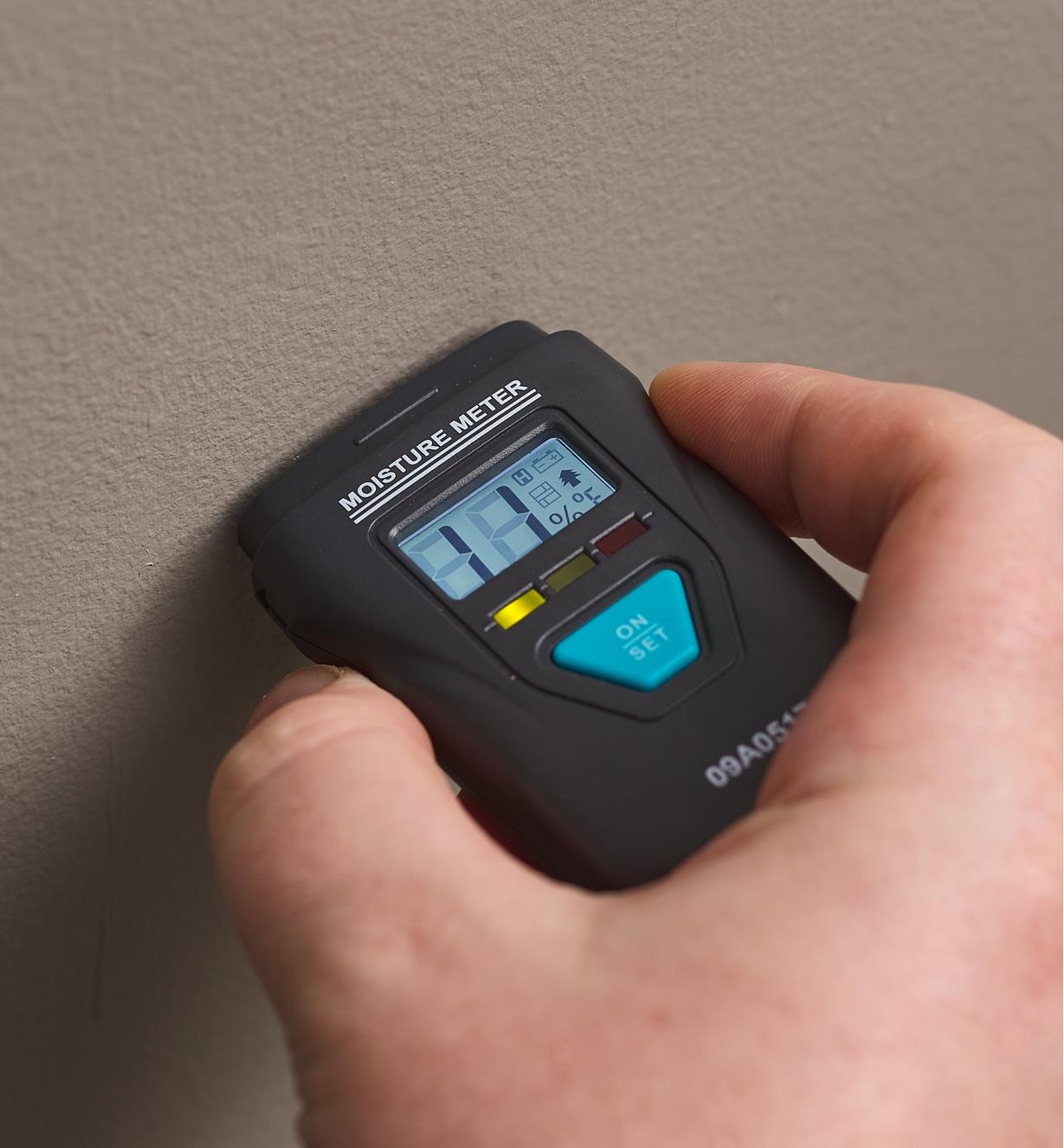The Ultimate Guide to Choosing the Right Moisture Meter for Your Requirements
The Ultimate Guide to Choosing the Right Moisture Meter for Your Requirements
Blog Article
Delve Into the World of Moisture Meters: Every Little Thing You Required to Know
In the realm of moisture meters exists a globe of precision and practicality that often goes undetected. These gadgets, while seemingly uncomplicated, hold a riches of information that can significantly influence different industries and applications. Recognizing exactly how moisture meters run, the various types readily available, and their diverse uses can clarify their importance in ensuring quality and efficiency. By exploring the ins and outs of dampness meters, one can uncover a useful tool that goes beyond plain dimension, offering understandings that can make a substantial distinction in various areas.
Exactly How Moisture Meters Work
Moisture meters operate by determining the electric conductivity or capacitance of products to identify the wetness web content present. These meters are indispensable devices across different markets, consisting of agriculture, construction, and woodworking. By using various approaches such as pin-type or pinless technology, dampness meters supply exact analyses that aid professionals make informed decisions.
Pin-type wetness meters work by placing the sharp pins right into the product being checked. The electric conductivity in between the pins is after that gauged, with greater dampness degrees bring about raised conductivity. Moisture Meter. On the various other hand, pinless dampness meters make use of electro-magnetic signals to check a bigger location without creating any kind of damages to the material's surface. These meters are optimal for swiftly examining wetness levels in large areas or finished items.
No matter the technique used, dampness meters play a crucial duty in protecting against problems such as mold growth, architectural damage, or product issues triggered by excess wetness. Understanding just how these meters job is important for ensuring the top quality and stability of materials in numerous applications.
Sorts Of Moisture Meters
Given the essential function moisture meters play in numerous industries, it is necessary to understand the different types readily available to specialists for properly examining dampness levels - Moisture Meter. There are mainly 2 major sorts of moisture meters: pin-type and pinless moisture meters

On the various other hand, pinless dampness meters utilize electromagnetic sensor plates to check a bigger area of the material without causing any damages. This kind is appropriate for rapidly scanning huge areas and is commonly utilized for flooring, wall surfaces, and ceilings. Pinless meters are practical for taking analyses on finished surfaces without leaving any kind of visible marks.
Both sorts of moisture meters have their benefits and are selected based upon the particular needs of the task at hand. Understanding the differences in between these types is important for experts to make exact wetness evaluations.
Applications Across Industries
Construction experts count on moisture meters to evaluate the dampness degrees in building products like timber, drywall, and concrete, which is crucial for maintaining structural integrity and protecting against issues like rot or mold and mildew. The floor covering industry utilizes dampness meters to determine the wetness material in subfloors prior to setting up various floor coverings, protecting against expensive problems due to excess moisture. In the food industry, wetness meters are utilized to monitor and regulate moisture degrees in items such as grains, nuts, and dried out fruits to preserve freshness and quality.
Tips for Utilizing Moisture Meters
When gauging the dampness content in various materials,Make use of the moisture meter's calibration setups to make sure precise readings. Calibration is important for the appropriate performance of a dampness meter. Before each usage, it is advisable to check and adjust the calibration setups according to the details product being examined. Furthermore, see to it the meter is readied to the proper dampness variety for the product you are measuring to get one of the most precise outcomes.
When using a pin-type moisture meter, place the pins to the ideal deepness advised for the product being checked. This guarantees that the dampness readings are extracted from the correct depth within the material, giving a more exact depiction of its wetness material. For pinless dampness meters, remember to maintain appropriate call with the material's surface to get reliable analyses.
Consistently inspect and change the batteries in your moisture meter to stop unreliable readings due More about the author to reduced power. Store the meter in a risk-free and completely dry area when not being used to a knockout post prolong its life-span and maintain its accuracy. By adhering to these suggestions, you can take full advantage of the performance of your dampness meter and get specific wetness web content measurements across various materials.
Upkeep and Calibration
To make certain the precision of dampness material measurements, regular upkeep and calibration of the moisture meter are crucial steps in its correct performance. Calibration adjusts the wetness meter to make sure that it offers regular and trusted results.
Calibration needs to be carried out occasionally, particularly if the wetness meter is utilized often or in critical applications where precise dimensions are required. Lots of moisture meters come with calibration tools or can be adjusted by professional services. Moisture Meter. It is suggested to keep a log of calibration dates and results to track the performance of the moisture meter gradually. By maintaining and calibrating the wetness meter on a regular basis, users can trust the accuracy of the wetness content dimensions acquired.
Final Thought

Finally, dampness meters play an essential duty in numerous industries by precisely gauging the moisture material of products. Recognizing how these gadgets function, the different types offered, and correct upkeep and calibration are crucial for acquiring reliable results. Whether in construction, manufacturing, or agriculture, making use of dampness meters aids make certain quality assurance and efficiency in processes.

In conclusion, dampness meters play a crucial duty in numerous markets by precisely measuring the moisture content of products.
Report this page